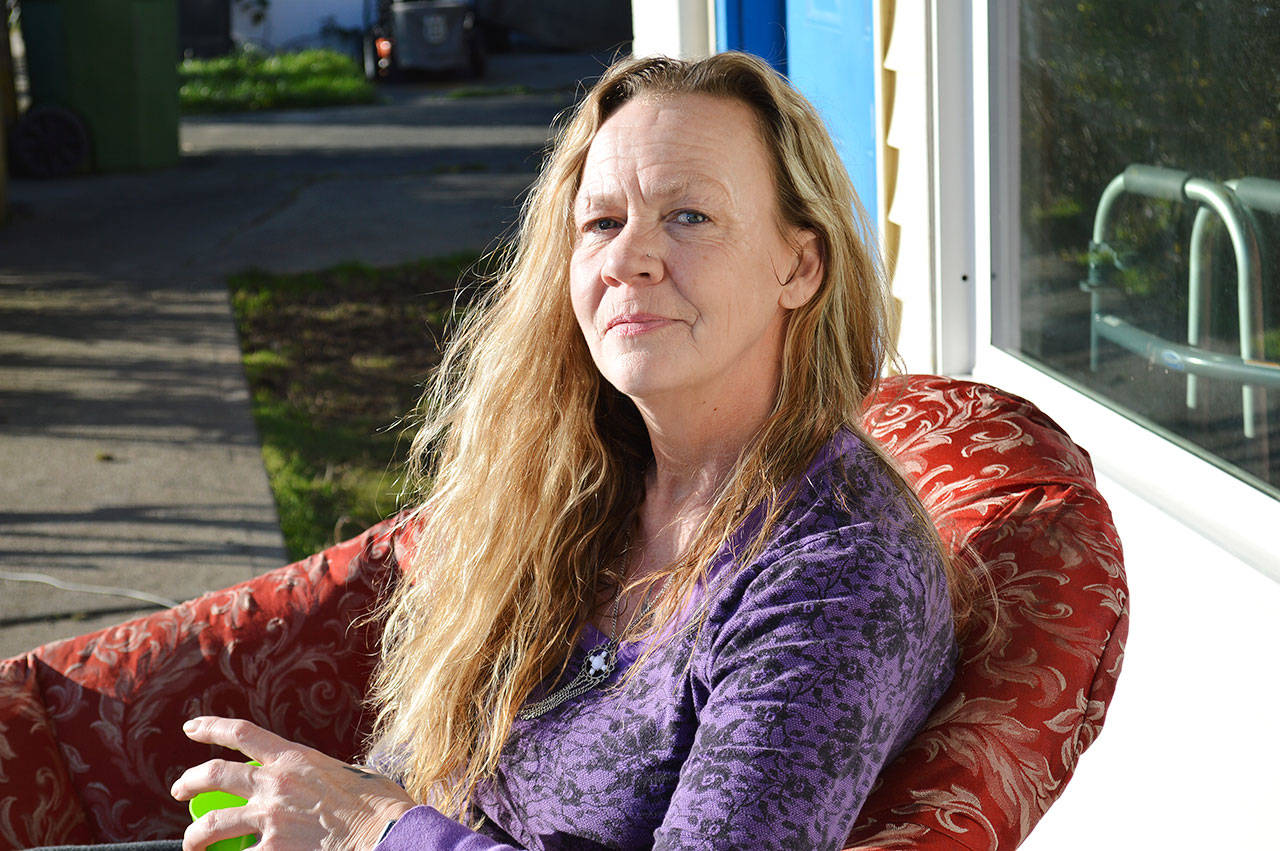After 55 years in Oak Harbor, Donna Moore recently received a letter that could mean her time living on the island is running out.
Citing a lack of available housing that’s forcing prices upwards, the letter informed Moore her rent may start increasing before the end of the month.
“I can’t afford a rent increase,” she said.
Moore said she’s searched Whidbey, but rent is too expensive everywhere. A recent analysis of housing needs in Island County found there is a significant shortage of housing for homeowners and renters with modest to low incomes.
The analysis also found half of renters are housing cost-burdened — meaning they are spending more than 30 percent of their income on housing.
MOORE, WHO is on disability and works part time, said she spends more than 50 percent of the income from her job and disability payments combined on rent. Moore has a degenerative bone disease, which makes working full time impossible.
“Being on disability, you can only make so much money, which gives you very few options,” she said. “Unless I were to give up my disability and try to go back to work full time, which I physically can’t do. If I could, I would, cause this is not the way I like to live.”
Moore’s mother and a large portion of her extended family all live on Whidbey Island, which is a large factor in her desire to stay. With the lack of options however, she’s been forced to start looking elsewhere.
THE COUNTY planning department recently completed an analysis of current challenges as part of an update to the housing element of the comprehensive plan. This element provides policy direction for regulations, programs and initiatives related to housing.
The analysis found a number of barriers to addressing affordable housing in Island County including a lack of funding for more subsidized low-income housing, the loss of affordable units, a discrepancy between fair market rent and military basic housing allowance and a need for public information and advocacy.
The report states that while the county’s shelter and transitional housing system is effective, clients cannot find permanent housing once their stay in transitional housing has ended. Existing subsidized developments built by private companies 20 to 40 years ago are reaching the end of their required affordability periods. Three subsidized projects, totaling 73 units were lost from inventory in recent years. The report states that Harbor Heights in Oak Harbor and CamBey Senior Apartments in Coupeville are currently at risk of transitioning to market-rate housing.
AROUND OAK Harbor, renters face more unique challenges as a result of its proximity to the base. The military’s basic housing allowance is higher than what can be given for housing vouchers provided by the Department of Housing and Urban Development. Landlords then find it more lucrative to charge rent based on the military’s housing allowance, which can make it difficult for voucher holders to find places to live.
The report stated that a greater public awareness is needed of the range of individuals and families who are facing housing affordability challenges. The impact to individuals is apparent to Moore. She said she’s seen other people she knows and people on local Facebook pages who are struggling.
“There are people literally begging for housing,” she said.
There are people who got displaced from their homes and are desperate for another place to live, she said. For this reason, she works hard to maintain her pickup truck in case something happens and that’s where she has to temporarily live. She’s no stranger to displacement either.
IN OCTOBER 2016, the house she was renting near Soundview Shopper burned down while she was at work in Port Townsend. She lost everything, including her two beloved dogs.
She was able to move thanks to a GoFundMe page set up by one of her friends. Now, her future in the city or on the island is uncertain.
“I’ve stayed in Oak Harbor for a reason,” she said. “…we have roots here, I mean deep roots here, and I don’t know what to do.”
The existing conditions in the county pose challenges to creating more housing to address the crisis, according to the report. The analysis cited a lack of sewer and water infrastructure in areas, limited access or proximity to health care and other services, and the permitting process as barriers to creating more developments.
Freeland and Clinton are examples of areas without a sewer treatment facility that are currently unable to reach their development potential. Other rural areas zoned for more intense development are not close to health care, regular public transit and other urban services that would be necessary for developing senior and subsidized housing.
Through stakeholder interviews, the county found the multi-phased nature of the permitting process made it difficult to line up contractors and start construction efficiently.
THE HOUSING shortage is personal for Moore and one she wants to be vocal about. Although she supports the military and her father was in the Navy, she sees the influx of military personnel as a major factor in the issue.
“I’ve never tried to butt into anything, but when it came to this housing thing, I can’t resist to speak out,” she said. “It really, really hurts me to see that there are so many people having to be displaced because the military came.”
She’s left with one lingering question for herself and people she knows: “Where do we go?”



